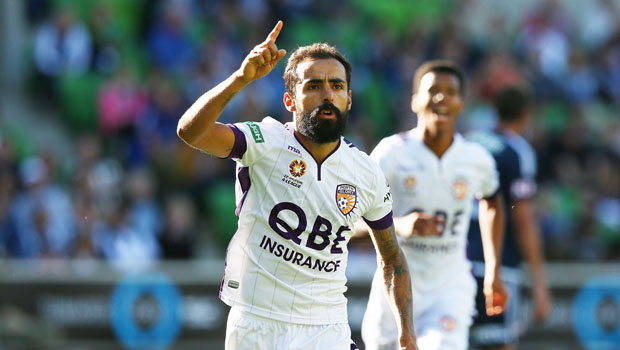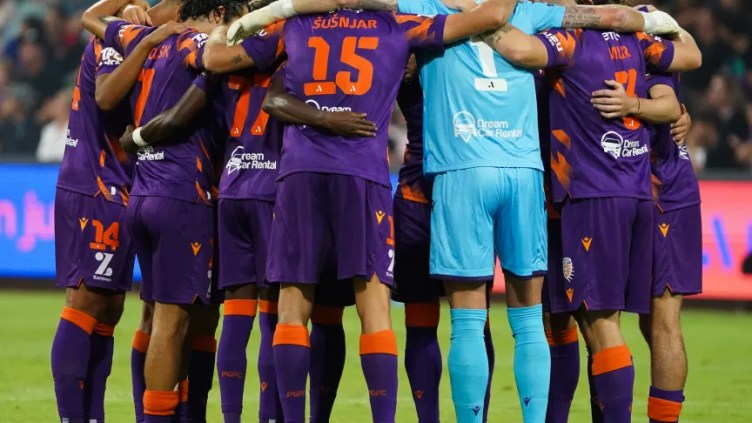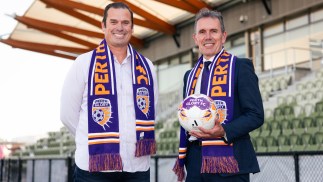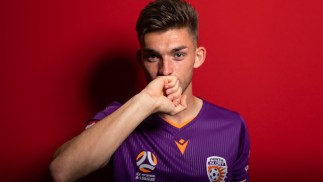When it comes to hot topics during the off-season, nothing trends to sizzle more than recruitment speculation.
The question of which new faces might be brought on board for the new campaign is one that inspires lengthy and often passionate debate among members and fans, some of it well-informed and some of it, well, less so.
But in reality, how does Glory’s recruitment process actually work?
We decided to cut through the hype and get down to the bare facts with the club’s Head of Football, Jacob Burns.
Perth Glory Online: Thanks very much for your time, Jacob.
If we could start right at the very outset of the process: let’s say the club has identified that it needs to recruit in a certain position, what happens next?
Jacob Burns: The first step is to look inside our own ranks at the club and also at players that are playing against our teams at the various levels from the A-League down.
Then there are obviously relationships with agents and players that both Kenny Lowe and I have and they might contact us directly or on behalf of a player or vice versa.
We’ve also got many platforms now that enable us to watch these players in incredible detail.
There are the software programs such as WyScout, InStat etc, where we pay a licence fee and can then take an in-depth look at the players that have come across the desk.
It’s a huge tool and one that can be used to great effect.
Then we go through a process of looking for character references from our contacts who might be people that have coached the player in question or played with or against him.
We have regular meetings on it [recruitment] especially in the off-season, during the transfer windows,, or when we have spots coming up during the season and places on the roster that need to be filled.
We always look to assemble a healthy squad that will push us to sustainable success within the parameters of the owner’s wishes, with the ultimate goal of winning trophies and qualifying for the Asian Champions League.
PGO: The software packages that you mentioned are part of a huge surge in the use of stats as part of the recruitment process that has taken place across most sports over the last five years or so.
We’ve seen some clubs follow the ‘Moneyball’, stats-driven model almost exclusively, but how much of a role does it currently play in Glory’s strategy?
JB: I always feel that, in addition to the stats and everything else that the software offers, it’s important to go and see guys live.
Kenny was abroad earlier in the off-season and got to see some of the players that we’d been looking at in the flesh and I also travel regularly to look at players all over the country.
There are now algorithms where you can look at every aspect of a player’s game and it’s going to give you an index of where they are and they’re pretty close to the mark.
For example, I have in my mind a picture of who I think the best five players in the A-League are and the algorithms will give you a pretty similar picture.
But ultimately it’s still a people business and going beyond the numbers, the player has to fit into your club’s dynamic and its philosophy of football.
There are so many things to weigh up.
You might know that someone is a good player in a certain position, but also know that they wouldn’t fit into the balance or formation of the current team.
Then there’s always the risk that the player could get injured in their first training session, but as long as you do your due diligence, you can be as sure as it’s possible to be that the player will be a good fit.
PGO: The recruitment process in the A-League is very different to that in most other leagues around the world due to the squad-size restrictions and the salary cap.
How much of a challenge do they provide?
JB: A lot of those regulations and restrictions many members and fans might actually be unaware of.
For example, you have to have three youth players (under 20-years-of-age) on your roster who are outside the cap, as are homegrown players and there is a maximum of five visa spots available.
Then there can be two marquees that sit outside the cap, but the rules about guest players were adjusted last year meaning that, on the approval of FFA and under certain criteria, such players are able to play for the whole season rather than only 14 games.
I believe that’s how Melbourne City effectively ended up with three marquee players last year.
You also have loyalty players that sit outside the cap, as do mature-age rookies who are players over 21 that have never had a pro contract.
You have to be strategic and savvy in getting more bang for your buck, in getting as much value out of the cap as you can.
There is a lot of management required with regard to the cap and you also have to understand what the owner wants to spend.
There’s a floor, a minimum that has to be spent, but anything above that is at the owner’s discretion.
That means that despite the cap being in place, you could still have a club spending three times what another club has spent.
In reality, the cap does not provide the level playing field that some people seem to think it does and that was pretty apparent last season when there was a 44-point gap between Sydney at the top and Newcastle at the bottom.
Another challenge is that the squads are still so small; a minimum of 20 and a maximum of 23 players.
A few injuries and a few players away on international duty and your squad can get pretty light pretty quickly.
PGO: There has been plenty of speculation about the future of the salary cap.
What are your thoughts on that?
JB: It’ll be interesting to see if it remains and for how long.
The spend made by clubs like Sydney FC, Melbourne Victory and Melbourne City is so much more than a lot of other clubs anyway, so you look at that and think it might be best to get rid of the cap.
But then the minimum-spend aspect perhaps protects some of the struggling clubs, so there are definitely arguments and counter-arguments around it.
PGO: It must give you a huge buzz when you put all that groundwork in and secure the services of a player such as Diego Castro who goes on to be an absolute revelation.
JB: It’s a wonderful challenge and one that I really enjoy.
I’m watching so much football; it’s the closest thing to being back out there.
I’m a big believer that everyone within the club, from the players and coaches through to the admin staff, has a huge part to play in its overall success.
We all have a role in finding those one and two percenters that can enable the club to be the best it can be.
And we all share the successes when they come.




